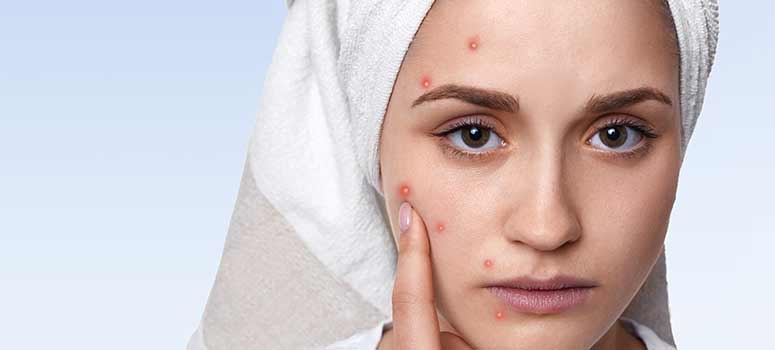The skin is the largest organ of our body. Its main function is to protect our body from coming in direct contact with allergens. However, there are some antibodies that attack the skin too and cause infections. The reason why it is important for everyone to know about skin health.Skin infections are caused by various germs and can vary from mild to serious in severity. Sometimes they can be treated simply with home remedies and over-the-counter medicines, and sometimes they may need advanced treatments. In this article, we will specifically talk about skin infections caused by various bacteria.
What are Bacterial Infections?
Bacterial infections are caused by the proliferation of a strain of Staphylococcus Aureus or Beta-hemolytic Streptococcus bacteria, on the body or inside it. These infections can be treated with antibiotics. If the bacterial infection worsens, the affected area has to be surgically drained. Hence, a dermatologist should be consulted right away to get an accurate diagnosis and treatment.
What are the Types of Bacterial Infections?
- Cellulitis
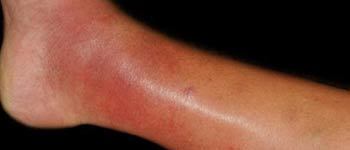
Symptoms: The symptoms of cellulitis include red areas on the skin that tend to expand, swelling, tenderness, pain, warmth, fever, red spots, blisters, and skin dimpling.
Affected Areas: Usually, this bacterial skin infection affects the skin on the legs. But it can also affect the face, arms, and other areas.
Cure: Cellulitis can be treated with oral antibiotics or intravenous antibiotics. It is also important to note that if it is left untreated, it can spread to the lymph nodes and bloodstream, thereby becoming a threat to your life.
Preventive Measures: Taking care of your skin by maintaining good skin hygiene and applying creams on cracks can help you prevent this bacterial skin infection.
- Folliculitis
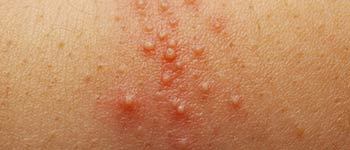
Symptoms: Initially, small red bumps or white-headed pimples can appear around hair follicles (pores from which each hair grows). Severe symptoms of folliculitis include pus-filled blisters that break open, itchy and burning skin, painful and tender skin, and large bumps.
Affected Areas: Folliculitis can affect any part of the body with hair such as the face, scalp, thighs, underarms, and groin area.
Cure: Mild cases of this bacterial infection can be treated with topical antibiotics. In severe cases, surgical cut-and-drainage treatments are used.
Preventive Measures: In the early stage, you can wash the affected area with antibacterial soap and follow up with an antibiotic ointment.
- Impetigo
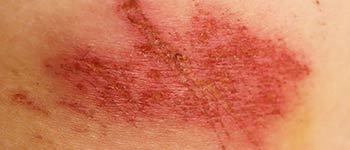
Symptoms: This skin infection appears as red sores on the face that quickly break open, ooze for some days, and then turn into yellowish-brown crusts.
Affected Areas: Impetigo sores usually occur around the nose and mouth and on the hands or feet of children. However, it can quickly spread to other areas of the body like face, arms, legs, armpits, neck folds, and buttocks.
Cure: Impetigo infections are treated with topical ointments and oral antibiotics.
Preventive Measures: You should avoid scratching blisters or sores to prevent the spread of this infection. Also, you should cut your fingernails regularly and cover the affected areas with bandages or gauze.
- Boils
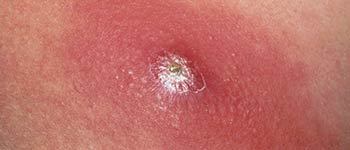
Symptoms: A boil appears as a red bump, which is initially small in size but can enlarge up to 5 centimeters in size. The area around the bump appears swollen and is painful. As the boil grows, it gets a yellowish-white tip that ruptures, and then the pus drains out.
Affected Areas: Boils appear mainly on the face, the back of your neck, armpits, thighs, and buttocks. However, it can affect any area with hair where you are most likely to sweat or experience friction.
Cure: Antibacterial soaps and topical antibiotics are used to treat boils.
Preventive Measures: To avoid getting boils, you should wash your hands regularly, avoid sharing clothes and personal items, and always cover your wounds with bandages until they heal.
- Erythrasma
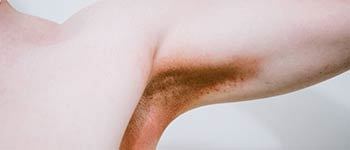
Symptoms: In the initial stage, this skin infraction appears as skin lesions of pink patches covered with fine scales and wrinkling. With time, these patches become red, gradually turning brown and developing scales.
Affected Areas: Erythrasma usually appears in the armpit, groin and toe area, or other areas where your skin experiences friction.
Cure: Oral antibiotics, antibiotic soaps, and fusidic acid are used to treat this skin infection.
Preventive Measures: Maintaining good hygiene, wearing clean clothes that absorb moisture, and keeping your skin dry are some ways to prevent erythrasma.
What are Some General Preventive Measures for Bacterial Skin Infections?
It takes just a cut on the skin for bacteria to enter and proliferate. Our feet are also prone to contact with bacteria from the floor.
- Firstly, maintain good skin cleanliness and hygiene.
- Do not share personal care items like razors, makeup, towels, linens or clothing.
- Wash exposed cuts, with antiseptic liquid, and keep the area clean and dry.
- Wear foot coverings to prevent contamination through contact, and cover any affected area with clean, dry bandages.
The key takeaway from this article should be that you must take good care of your skin. Even if you are not a person interested in the aesthetic aspect of skincare!

